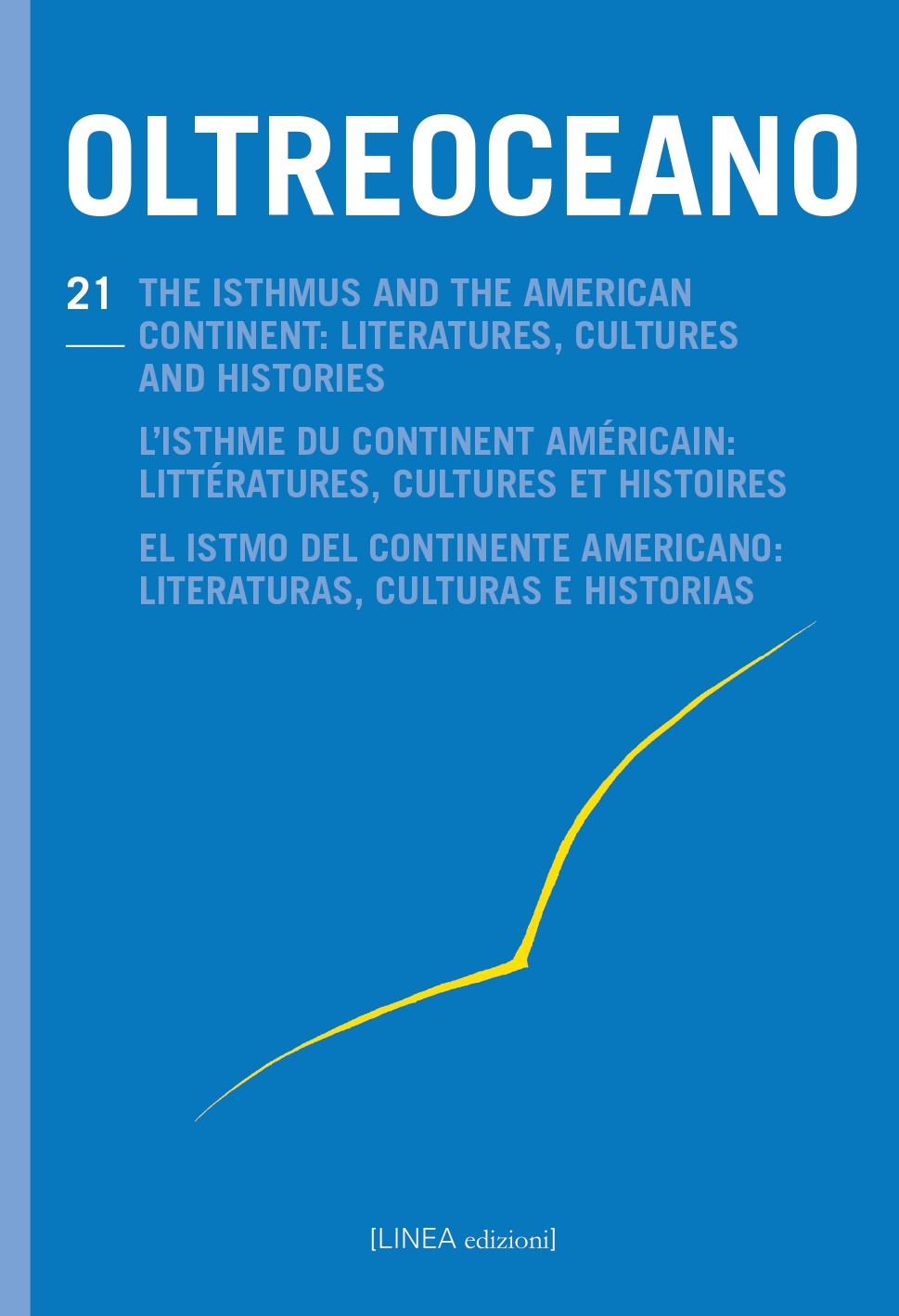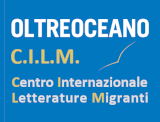Vanishing Creole in the Nineteenth-Century Atlantic: The United States, Panama, and the Caribbean
DOI:
https://doi.org/10.53154/Oltreoceano66Parole chiave:
creoleness, nineteenth-century, anglophone atlantic, ambiguityAbstract
Certain key concepts in the (post)colonial Atlantic change as they traverse regions, languages, empires, and oceans over centuries. Terms such as “pirate”, “renegade”, “neophyte”, “convert”, “captive”, “Creole”, and others undergo trajectories of racialization, ambiguation, demonization as they leave their European language of origins to enter the Anglophone sphere. This is famously the case for the word “Creole”. If the Spanish criollo and the Portuguese crioulo indicated that something or someone was born in the colonies, the US Anglophone sphere declensed the word “Creole” into a multitude of competing definitions, all of which were intensely, although ambiguously, racialized. In literary works across the American North and the American South, “Creole” became synonymous with the illegibility of blended ancestries, often unleashing waves of incontrollable interracial desire. In this paper, I will linger on the word “Creole” and its ambiguities in two antebellum works set in the South of the United States: James S. Peacocke’s novel The Creole Orphans (1856), and Caroline Norton’s poem “The Creole Girl” (1840). In their travels across the North and South of the US, the Caribbean, and Europe, the titular “Creoles” will encounter a wide spectrum of parallel but dissonant definitions of Creoleness, and of themselves, tinted with varying degrees of racialization. This paper follows the iterations of the word “Creole” in these texts and, marginally, in other similar Creoleness textualities, to showcase the instability of the discourse of Creoleness in the Anglophone Atlantic. I also intend to show how Creole ambiguity, indeterminacy, and shiftiness release a peculiar mystique that often finds expression through a vocabulary of eroticism and interracial desire.
Downloads
Riferimenti bibliografici
Balutansky, K. M. & Sourieau, M. A. (1998): Introduction. In K. M. Balutansky & M. Sourieau (Eds.), Caribbean Creolization: Reflections on the Cultural Dynamics of Language, Literature, and Identity (pp. 53-61). Kingston: University of the West Indies Press.
Bauer, R. & Mazzotti, J. A. (2009): Creole Subjects in the Colonial Americas: Empires, Texts, Identities. Chapel Hill: University of North Carolina Press.
Bell, C. (1997): Revolution, Romanticism, and the Afro-Creole Protest Tradition in Louisiana, 1718-1868. Baton Rouge: Louisiana State University Press.
Benítez-Rojo, A. (1998): Three Words towards Creolization. In K. M. Balutansky & M. Sourieau (Eds.), Caribbean Creolization: Reflections on the Cultural Dynamics of Language, Literature, and Identity (pp. 53-61). Kingston: University of the West Indies Press.
Berlin, I. (2017): From Creole to African: Atlantic Creoles and the Origins of African-American Society in Mainland North America. In D. A. Pargas & F. Roşu (Eds.), Critical Readings on Global Slavery (pp. 1216-1262). Leiden: Brill.
Bernabé, J. et al. (1993): Éloge de la créolité. Paris: Gallimard.
Berry, B. (1960): The Myth of the Vanishing Indian. Phylon, 21, 1, pp. 51-57.
Cable, G. W. (1883): Old Creole Days, 1879. New York: Charles Scribner’s Sons.
Castillo Street, S. & Crow, C. L. (2006): The Palgrave Handbook of the Southern Gothic. New York: Springer.
Curran, A. S. (2011): The Anatomy of Blackness: Science and Slavery in an Age of Enlightenment. Baltimore: Johns Hopkins University Press.
Davis, T. M. (2011): Southscapes: Geographies of Race, Region, and Literature. Chapel Hill: University of North Carolina Press.
DeVere-Brody, J. (1998): Impossible Purities. Durham: Duke University Press.
Dippie, B. W. (1982): The Vanishing American: White Attitudes and US Indian Policy. Middletown: Wesleyan University Press.
Eble, C. (2008): Creole in Louisiana. South Atlantic Review, 73, 2, pp. 39-53.
Fortune, A (1994). Obras selectas. Panama City: Instituto Nacional de Cultura.
Garraway, D. L. (2006): Toward a Creole Myth of Origin: Narrative, Foundations and Eschatology in Patrick Chamoiseau’s “L’esclave Vieil Homme et le Molosse”. Callaloo, 29, 1, pp.151-167.
Glissant, É. (1990): Poétique de la relation. Paris: Gallimard.
Harris, W. (1998): Creoleness: The Crossroad of a Civilization. In K. M. Balutansky & M. Sourieau (Eds.), Caribbean Creolization: Reflections on the Cultural Dynamics of Language, Literature, and Identity (pp. 23-35). Kingston: University of the West Indies Press.
Hearn, L. (2006): Youma: The Story of a West-Indian Slave. New York: Harper.
Kein, S. (2000): Creole: The History and Legacy of Louisiana’s Free People of Color. Baton Rouge: Louisiana State University Press.
Lipski, J. M. (1986): The Negros Congos of Panama: Afro-Hispanic Creole Language and Culture. Journal of Black Studies, 16, 4, pp. 409-428.
Midlo-Hall, G. (2006): Africans in Colonial Louisiana: The Development of Afro-Creole Culture in the Eighteenth Century. Baton Rouge: Louisiana State University Press.
Miró, R. (1966): Cien años de poesía en Panamá (1858–1952). Panama City: Librería Avance.
Ortiz, F. (1940): Los Factores Humanos de la Cubanidad. Retrieved from http://smjegupr.net/wp-content/uploads/2012/05/Los-factores-humanos-de-la-cubanidad.pdf (Last accessed (01/09/2022).
Peacocke, J. S. (1856): The Creole Orphans: Or, Lights and Shadows of Southern Life. New York: Derby & Jackson.
Pulido Ritter, L. (2012): Armando Fortune y la Identidad Cultural Panameña. Tareas, 140, pp. 83-106.
Punter, D. (2006): The Gothic Condition: Terror, History and the Psyche. Cardiff: University of Wales Press.
Robinson, O. (2007): City of Exiles: Unstable Narratives of New Orleans in George Washington Cable’s Old Creole Days. Vienna: Verlag der Österreichischen Akademie der Wissenschaften.
Sheridan Norton, C. (1940): The Creole Girl. In The Dream, and Other Poems, 1841 (pp. 85-101). Philadelphia: Carey & Hart.
Sollors, W. (1999): Neither Black nor White yet Both: Thematic Explorations of Interracial Literature. Cambridge: Harvard University Press.
Spivak, G. C. (1985): Three Women’s Texts and a Critique of Imperialism. Critical Inquiry, 12, 1, pp. 243-261.
The Oxford English Dictionary (2022): entry “Creole.” Retrieved from https://www.oed.com/view/Entry/44229?redirectedFrom=creole#eid (Last accessed 21/06/2022).
Vellenga Berman, C. (2006): Creole Crossings: Domestic Fiction and the Reform of Colonial Slavery. Ithaca: Cornell University Press.
Watson, S. S. (2014): The Politics of Race in Panama: Afro-Hispanic and West Indian Literary Discourses of Contention. Gainesville: University Press of Florida.
Wilkinson, A. B. (2013): Blurring the Lines of Race and Freedom: Mulattoes in English Colonial North America and the Early United States Republic. Berkeley: University of California Press.
Williams, L. V. (1985): Carlos Guillermo Wilson and the Dialectics of Ethnicity in Panama. Afro-Hispanic Review, 4, 2/3, pp. 11-16.
Wilson, C. G. (1998): The Caribbean: Marvelous Cradle-Hammock and Painful Cornucopia. In K. M. Balutansky & M. Sourieau (Eds.), Caribbean Creolization: Reflections on the Cultural Dynamics of Language, Literature, and Identity (pp. 36-43). Kingston: University of the West Indies Press, 1998.
Downloads
Pubblicato
Come citare
Fascicolo
Sezione
Licenza

Questo lavoro è fornito con la licenza Creative Commons Attribuzione - Non commerciale - Condividi allo stesso modo 4.0 Internazionale.
Gli autori si impegnano a rispettare le seguenti condizioni, che s’intendono accettate al momento della sottomissione per la stampa dei propri contributi.
L’invio di un testo implica che esso sia inedito e non in attesa di essere pubblicato altrove.Gli autori si impegnano a rispettare le seguenti condizioni, che s’intendono accettate al momento della sottomissione per la stampa dei propri contributi.
- Qualora venga accettato, l’autore conferisce all’editore il diritto di pubblicarlo e distribuirlo sia in forma cartacea che nell’edizione elettronica in rete. Gli articoli pubblicati saranno scaricabili e resi disponibili in open access.
- Purché segnali correttamente che la prima pubblicazione è avvenuta sulla rivista «Oltreoceano. Rivista sulle migrazioni», l’autore ha facoltà di: a) riprodurre l’articolo in estratti separati o raccolti in volume; b) pubblicare l’articolo nel proprio sito personale o in quello di corsi di insegnamento purché si tratti di siti di natura non commerciale; c) depositare l’articolo in archivi online di carattere non commerciale, legati all’istituzione di appartenenza o come parte di progetti di diffusione non commerciale e open access dei lavori scientifici.
Non è consentita l’utilizzazione dei contributi da parte di terzi, per fini commerciali o comunque non autorizzati. L’editore declina ogni responsabilità sull’uso non autorizzato del materiale pubblicato sulla rivista.













